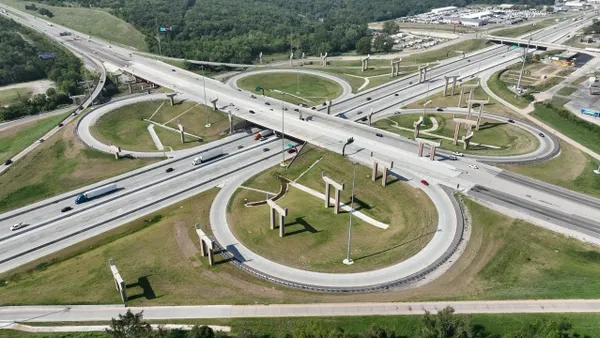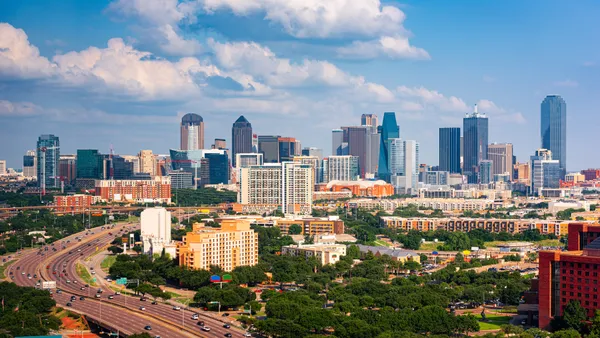Dive Brief:
- After the combination of a winter storm and high tide pushed a surge of floodwaters through the streets of downtown Boston, some are calling for the construction of a $10 billion seawall in Boston Harbor, according to the Boston Herald.
- The barrier would run from Logan International Airport to South Boston, although a more ambitious proposal would have the wall extend to other coastal areas. The barrier would be patterned after a similar structure in Rotterdam, in the Netherlands, and one in the planning stages in Venice, Italy.
- In a press conference, Boston Mayor Martin Walsh suggested that the recent flooding was a result of climate change, and told those in attendance that developers need to take flood zones into account when planning future waterfront projects in the city.
Dive Insight:
The barrier in Rotterdam is made of floating pontoons that fill with water and sink in advance of a storm surge threat. After the event has passed, the water is pumped from the barrier doors and can be stored in dry dock. The design of the barrier allows ship traffic to enter and exit the port unfettered.
On a smaller scale, a hurricane protection barrier off the shore of Stamford, CT, has protected approximately 600 acres near Stamford Harbor from storm surges since 1969. City officials said the barrier, which is raised prior to an expected flood threat, saved property owners tens of millions in damages during Superstorm Sandy in 2012.
A group of advocates is also pushing for construction of offshore barriers to protect New York City from future destructive storms like Sandy. Suggestions include one below the Verrazano Narrows in order to prevent the Atlantic Ocean from surging into the city's harbor and another would keep waters from Long Island Sound from inundating the East River, which typically floods areas in Queens, Brooklyn, the Bronx and Manhattan.
Alex Wilson, president of the Resilient Design Institute in Brattleboro, VT, told Construction Dive in March that Sandy was a major driver of the resilient construction conversation. Sandy caused an estimated $69 billion in damage and nearly 60 deaths after it hit the coastlines of New York and New Jersey. There was wind damage, but the biggest hit came from flooding.
In fact, some New York City-area infrastructure still shows signs of damage from Sandy, including the Hudson River rail tunnel, which was flooded during the storm. Equipment corroded from saltwater, and officials estimate that it will cost approximately $13 billion to build a new tunnel.














